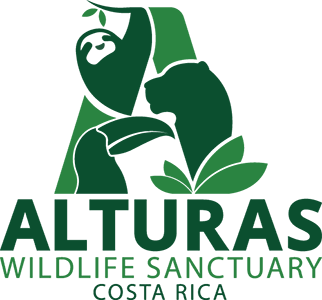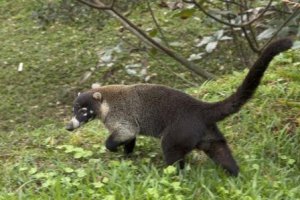They have grey-ish brown fur with white accents on the sides. They have a long, pointed snout which is usually white in color. They have a long tail that has black and brown bands from tip to bottom and is held erect while walking. Adults weigh from 3-5kg.
Coati Mob Video
Over the past few weeks, staff together with our animal husbandry and wildlife conservation interns have been trekking out to the forest to install infra-red camera traps in various sites in order to find prime locations for species-specific releases. The video footage we have received is amazing and reminds us of the astonishing amount of wildlife we have here in Costa Rica. From agoutis to packs of coatis, wild peccaries, tamanduas, and even the rarest species of all, wild ocelot’s we caught it all on tape! This video is a minute long, but make sure you watch the whole clip, it’s worth it!
Taxonomy: (Nasua narica)
Spanish Name: Pizote
Other Common Names: Pizote, antoon, and tejón
Distribution: Throughout most of Central America, and into western Colombia and Ecuador, as well as further north in to Mexico and North America.
Habitat: Wooded Areas/Forests of America. Found at sea level to 9,000 ft.
Behavior: Throughout most of Central America, and into western Colombia and Ecuador, as well as further north in to Mexico and North America.
Diet: They are omnivores which means they eat a wide variety of food including fruits, bugs, and small vertebrates such as mice, lizards, and frogs. They can travel up to 2km in a single day foraging for food.
Reproduction: Males enter the large bands of females during the months of February or March. Even when accepted in to the group, males are still subordinate to the females. He will breed with various females in the group and then eventually be driven away. The female will make a nest and give birth away from the group, and will only leave the nest to find food. When the young are around 5 months old they will leave the nest to rejoin the band. Once in the band, the whole group will raise the young together including nursing, grooming and protection.
Threats: They are often hunted, or caught in traps set for other species. They are also threatened by large-scale habitat loss.
At Alturas: We receive many orphans here, or adults who have been hit by cars. Often if you see one coati crossing the road, it is likely there are more waiting to follow so always slow down if you see one crossing.



